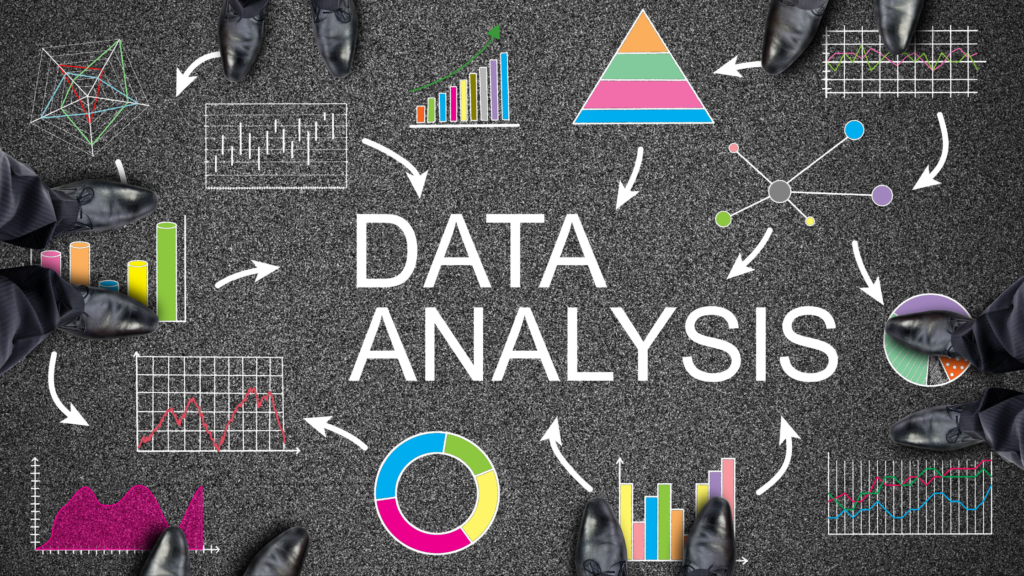Programming Languages for Data Science
Table of Contents
In this edition, we will explore the top trending programming languages for data science in 2025 and discuss their importance for data scientists. Data science is a rapidly evolving field, and the choice of programming language significantly impacts efficiency, scalability, and ease of implementation. While many languages can be used, certain ones stand out due to their flexibility, ease of learning, and extensive libraries. This document will be discussing Python, R, Julia, and Java, and how they are being utilized in Data Science.
Python: The Undisputed Leader
Python remains a dominant force in the data science world, thanks to its versatility and beginner-friendly syntax. Its extensive library support, ease of use, active community, and seamless integration with various tools make it the go-to language for data scientists. With its ability to handle large datasets, automate tasks, and build complex machine learning models, Python empowers professionals to uncover valuable insights from data efficiently.
Moreover, Python’s widespread adoption in data science can be attributed to several key factors. Below are some of the main reasons why data scientists prefer Python over other programming languages:
Extensive Libraries
Python boasts a rich ecosystem of libraries specifically designed for data science. Libraries such as NumPy and pandas allow for efficient data manipulation and analysis, making it easier to transform and handle large datasets. Scikit-learn provides a robust framework for implementing a variety of machine learning algorithms, while TensorFlow and Keras are powerful tools for deep learning applications. Additionally, Matplotlib and Seaborn enable data visualization, making it simple to create informative graphs and plots that can help reveal insights from the data.
Ease of Use
One of Python’s most attractive features is its clear and concise syntax, which allows users to write code that is easy to read and understand. This accessibility lowers the barrier to entry for beginners who are new to programming and data analysis. Moreover, Python’s interactive coding environment, such as Jupyter Notebooks, facilitates quick experimentation and iteration, enabling data scientists to prototype ideas at a rapid pace without significant overhead.
Strong Community Support
Python’s immense and active global community is a vital asset for both new and experienced data scientists. An abundance of online resources, including documentation, forums, and tutorials, ensures that users can easily find solutions to problems they encounter. This strong community support fosters collaboration and knowledge sharing, which enhances the overall learning experience and promotes best practices within the field.
Integration Capabilities
Python’s compatibility with a wide range of big data tools and cloud computing platforms is a key factor in its popularity for enterprise-level applications. It can seamlessly interface with platforms like Apache Hadoop and Spark, allowing for efficient processing of large datasets. Additionally, Python can connect to various cloud services such as AWS, Google Cloud, and Azure, enabling organizations to leverage scalable and flexible computing resources. This integration capability not only enhances workflow efficiency but also paves the way for deploying data science solutions in real-world applications.
R: The Best For Statistical Computing
R is a widely used programming language for statistical computing and data visualization. Its ability to perform advanced statistical analysis, generate powerful visualizations, and adapt to various data-related tasks makes it a top choice for analysts and researchers. Since R is open-source and highly customizable, it caters to both beginners exploring data science and experienced professionals conducting complex research.
Additionally, R’s popularity in data science is driven by several key features that set it apart. Here’s why it continues to be a strong competitor in the field:
Advanced Statistical Analysis
R is particularly renowned for its capabilities in statistical modeling and analysis. It offers a vast array of statistical techniques ranging from basic descriptive statistics to complex inferential models. This robust functionality allows data analysts and researchers to efficiently perform a variety of analyses, including linear and nonlinear modeling, time-series analysis, and multivariate analysis. Furthermore, R’s rich ecosystem of packages provides specialized tools for specific statistical methods, ensuring that users have access to the latest methodologies in research.
Powerful Visualization
One of R’s standout features is its exceptional ability to create detailed and aesthetically pleasing data visualizations. With libraries such as ggplot2, users can produce high-quality static graphics that communicate complex data insights clearly and effectively. Additionally, the Shiny package enables the development of interactive dashboards that allow end-users to engage with data in real-time, unlocking deeper insights through dynamic visual representations. These visualization tools not only enhance data understanding but also facilitate better decision-making processes.
Open-Source and Customizable
R’s open-source nature is another significant advantage, as it fosters a collaborative community where users can contribute to the development of packages and tools. This allows researchers and developers to share their innovations with others, creating an extensive library of resources tailored to diverse data science challenges. Users can also customize existing packages or develop new ones to meet their specific needs, enhancing the flexibility of R for various applications in different fields such as healthcare, finance, and social sciences.
Julia: The Rising Star
Julia is gaining popularity for its speed and efficiency in numerical computing and machine learning.
High Performance
Julia is rapidly gaining traction within the fields of numerical computing and machine learning, primarily due to its remarkable speed and efficiency. As a language specifically designed for high-performance computing, Julia excels at handling complex calculations and large datasets, making it particularly well-suited for applications that require intensive data processing.
Easy Syntax
One of Julia’s standout features is its user-friendly syntax, which blends the best elements of both Python and MATLAB. This simplicity allows developers and researchers to write clear and concise code, reducing the learning curve for those familiar with other programming languages. The language’s design promotes easy integration and interoperability with existing codebases, further enhancing its accessibility.
Machine Learning and AI Applications
Julia is making significant strides in machine learning and artificial intelligence. Its burgeoning ecosystem includes powerful libraries, such as Flux.jl, which provide robust tools for developing deep learning models. These libraries facilitate the implementation of advanced algorithms, allowing developers to leverage Julia’s performance capabilities for tasks ranging from data analysis to neural network training. As a result, Julia is positioning itself as a compelling choice for professionals looking to advance their machine learning projects with greater efficiency and speed.
Java: Powering Big Data Applications
Java continues to be significant in data science, especially in contexts requiring large-scale applications and efficient big-data processing.
Scalability
One of Java’s standout features is its scalability. The language is designed to support the development of high-performance applications that can handle increasing loads and expanding datasets seamlessly. This makes Java an ideal choice for organizations looking to grow their data operations without sacrificing performance.
Big Data Tools Support
Java plays a pivotal role in the ecosystem of big data tools. It is frequently used in conjunction with powerful frameworks such as Apache Hadoop and Apache Spark, which are essential for processing and analyzing massive datasets. This compatibility allows data scientists to leverage Java’s robust capabilities while utilizing the strengths of these big data tools for efficient data manipulation and analysis.
Enterprise Adoption
Java’s strong presence in the enterprise environment cannot be overstated. Many organizations, from startups to established corporations, rely on Java for their data science applications. This widespread adoption not only validates the language’s utility and reliability but also opens up numerous long-term opportunities for professionals skilled in Java within the data science domain.
Why Python is the Most Popular Choice
Among all programming languages, Python stands out for its ease of use, extensive libraries, and strong community support. Its simple syntax makes it beginner-friendly, while its powerful tools enable professionals to tackle complex data science tasks efficiently. With a vast ecosystem of libraries, seamless integration with other technologies, and continuous community-driven improvements, Python remains the top choice for data science. Here’s a closer look at why it continues to be the most preferred language in this field:
User Friendly
One of Python’s biggest advantages is its simple and readable syntax. Its intuitive design helps beginners quickly grasp core programming concepts without unnecessary complexity. Unlike other programming languages that require lengthy boilerplate code and intricate syntax, Python allows newcomers to focus on learning essential coding principles and problem-solving skills rather than struggling with the language’s technical details.
Rich Ecosystems
Python offers a vast ecosystem of libraries and frameworks designed to meet diverse data science needs. For data manipulation and analysis, Pandas and NumPy provide powerful tools to efficiently handle large datasets. For data visualization, Matplotlib and Seaborn make it easy to create stunning and insightful charts. Additionally, for machine learning and deep learning, libraries such as TensorFlow and scikit-learn enable data scientists to build complex models with ease. This extensive collection of resources ensures that Python supports every stage of the data science workflow, from cleaning raw data to building advanced predictive models.
Cross-Platform Compatibility
Another key strength of Python is its ability to run seamlessly across different operating systems, including Windows, macOS, and Linux. This cross-platform compatibility makes Python a flexible choice for data science projects, especially in organizations where teams work on different systems. Data scientists can develop, test, and share their work effortlessly, without worrying about compatibility issues.
Conclusion
The choice of programming language in data science depends on the specific use case, industry requirements, and personal preferences. Python is a leading language due to its simplicity and the power of its libraries. In summary, Python’s intuitive syntax, diverse set of libraries, and strong cross-platform support make it the preferred programming language in the data science community. Its balance of simplicity and power makes it accessible for beginners while offering advanced capabilities for experienced professionals tackling complex data challenges.
However, R, Julia, and Java also play important roles in various aspects of data science. Learning multiple programming languages can enhance a data scientist’s versatility and improve career opportunities.
Check out the post on Data Analysis: Mastering Data Analysis and Machine Learning with Scikit-Learn
PS: You can access the summary in Data Science Demystified Daily Dose on LinkedIn.
#DataScience #MachineLearning #AI #Python #ArtificialIntelligence #BigData #SQL #ProgrammingLanguages #Analytics #DataScienceDemystified #DataScienceTrends




I enjoy your writing style genuinely loving this web site.